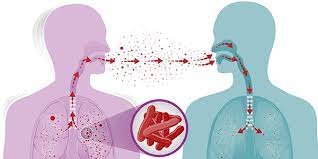As summer begins, people across India start heading to hilly places to spend their vacation and taste cleaner and cooler air and enjoy a healthy and pleasant travel experience.
However, Shillong, which is a popular tourist destination in the North East, has shown a spike in air pollution this year.
Airvoice India recently came out with a report on the study it conducted on popular tourist destinations such as Goa, Kerala, Shillong, Nagaon, Himachal Pradesh, and Kashmir ny analysing air quality data from January 1 to July 1.
The data was collected from the Central Pollution Control Board (CPCB), focusing on five main pollutants – PM2.5, PM10, NO2, NH3, and SO2.
The study assessed compliance with the National Ambient Air Quality Standards (NAAQS), and the Air Quality Index (AQI) was calculated for these pollutants.
According to the NAAQS, prescribed pollutants’ concentration levels may not be violated more than 2 per cent of the time (fewer than four days in a 182-day period).
The report said that significant exceeds in air pollution were observed in Shillong at 20 per cent and Nagaon (Assam) at 47 per cent. Himachal Pradesh’s town of Baddi recorded 88 per cent pollution. Goa however showed lesser air pollution (9 per cent).
Particulate matter (PM), including PM2.5 and PM10, was identified as the primary contributor to poor air quality in these regions.
“Air quality trends suggest it began improving during the winter season and continued till the pre-monsoon periods, with July-August expected to have the best air quality in the last six months,” Airvoice India said.
It also said that while many locations offer breathtaking beauty and unique experiences, travelers should be aware of the potential health impacts of air pollution.
“By staying informed, tourists can make more conscious decisions to ensure a healthier and more enjoyable travel experience. Regular monitoring and reporting on air quality at popular tourist destinations can help visitors make well-informed choices. This initiative promotes transparency and prioritises public health, demonstrating a commitment to sustainable tourism,” it added.
Col. Ashwini Channan, CEO of Airvoice India while commenting on the report said, “When starting this study, our goal was to recommend vacation spots based on air quality. Unfortunately, current information on air quality in tourist destinations is quite limited. We compared data from just a few stations. A modern science-based approach requires dense air quality monitoring networks in each locality, providing real-time air quality data on every street. Digital twins also help predict air quality, considering all influencing factors.”
“Real-time data and forecasts in user-friendly applications allow people to manage their environmental impact effectively. I hope soon everyone will be able to easily assess when a vacation will be health-beneficial and when it’s better to stay home,” he added.
























